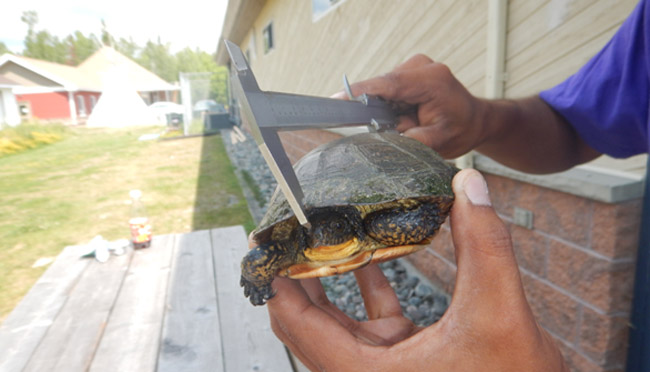Magnetawan to host environmental and land management conference

By Rick Garrick
MAGNETAWAN FIRST NATION – A Species at Risk Stewardship and Road Ecology presentation is one of seven scheduled for Magnetawan First Nation’s upcoming Environmental Stewardship and Anishinabek Land Management conference.
“Road ecology is the study between road networks and the environment they go through,” says Ryan Morin, Magnetawan’s program coordinator/species at risk biologist and speaker for the Species at Risk Stewardship and Road Ecology presentation. “Road ecology is a fairly young term but it’s gaining momentum fast as we’re sort of realizing what fragmentation does — certain species like the ones I work on, which are turtles and snakes, tend to not to care about roads and cross them. This source of mortality is what is leading to their population decline, whereas some species that are afraid of roads are also negatively affected by them because they are not able to spread their genetics out or to access habitat on the other side of the road that they might have originally used before the road went in.”
Morin says his research will inform the Ministry of Transportation on culvert and fencing construction to protect species at risk on Highway 69/Highway 400.
“Magnetawan is literally 4,700 hectares of wetland and rock,” Morin says. “We have species that are almost extinct in Canada and there is just a slight gravel slope that leads from their wetland on to the (highway). We probably have some of the highest rates in Ontario for (species at risk) dying.”
Morin says about 40 Blanding’s turtles died this past summer along the Robinson Huron community’s 5.8 kilometre stretch of the highway.
“(Blanding’s turtles) are known to grow so slowly and live to almost a 100 years old,” Morin says. “They don’t even lay eggs until they are 20 or 25.”
The Feb. 18 conference features a variety of presenters, including Amber Sandy, project coordinator for Turtle Island Conservation; Anthony Laforge, manager of Magnetawan’s Lands and Resources department; Paul Heaven, biologist with Glenside Ecological Services; Sean Boyle, PhD candidate at Laurentian University and Sharilyn Johnston, environment coordinator for Aamjiwnaang First Nation.
“We have topics at different stations and people break up into groups,” Morin says. “Anyone can ask questions or answer questions or share stories on the topic. Each topic is going to have a moderator to make sure the conversation keeps moving.”
Sandy plans to describe her organization’s role as well as how they have supported First Nation communities with environmental initiatives over the past few years.
“Our organization has been at the Toronto Zoo since 2005 and we have developed educational resources, specifically around species at risk,” Sandy says. “In the past few years we’ve been doing cultural mapping with communities, (including) hiring students within communities to document their own community’s environmental knowledge from their Elders and put it into a mapping database that could be shared with the whole community.”
Sandy will also discuss the benefits of First Nations-driven and run conservation initiatives and projects.
“I will be talking a bit about some of the projects we have previously run and the connections we have been able to build between different First Nation communities,” Sandy says. “We’ve been able to partner with Magnetawan to be a part of their summer camps and teach the children about species at risk activities.”
Sandy says the children enjoy the activities, which include looking for different species to learn more about them and working on habitat improvement projects.
“We bridge together western science with First Nations knowledge,” Sandy says. “First Nations people are natural scientists — that is how Turtle Island Conservation approaches any of these subjects.”


